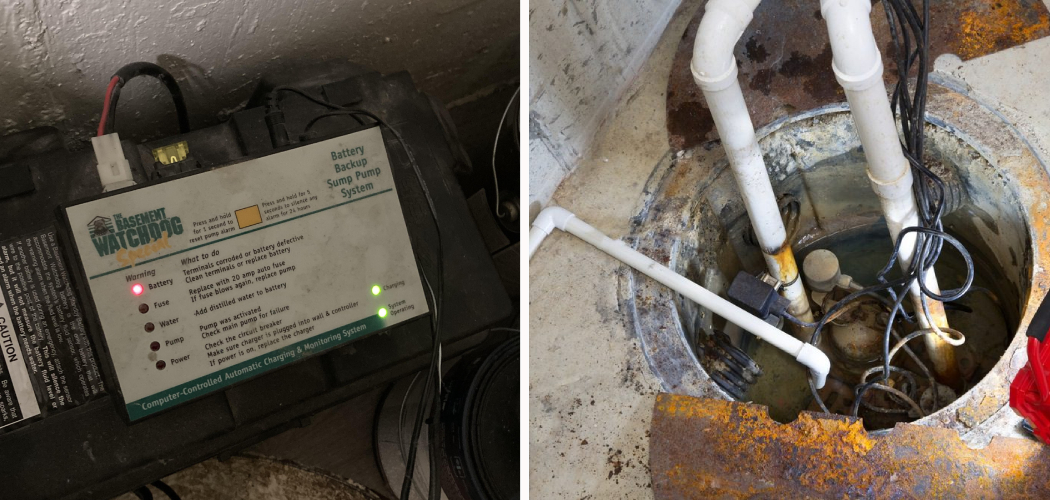Has the continual beeping of your sump pump alarm driving you mad, keeping you awake at night? You’re not alone – that high-pitched squeal makes even the calmest souls feel like pulling their hair out. As helpful as sump pumps are in keeping basements dry during heavy rain or spring thaws, their warning alarms are notorious for being overzealous.
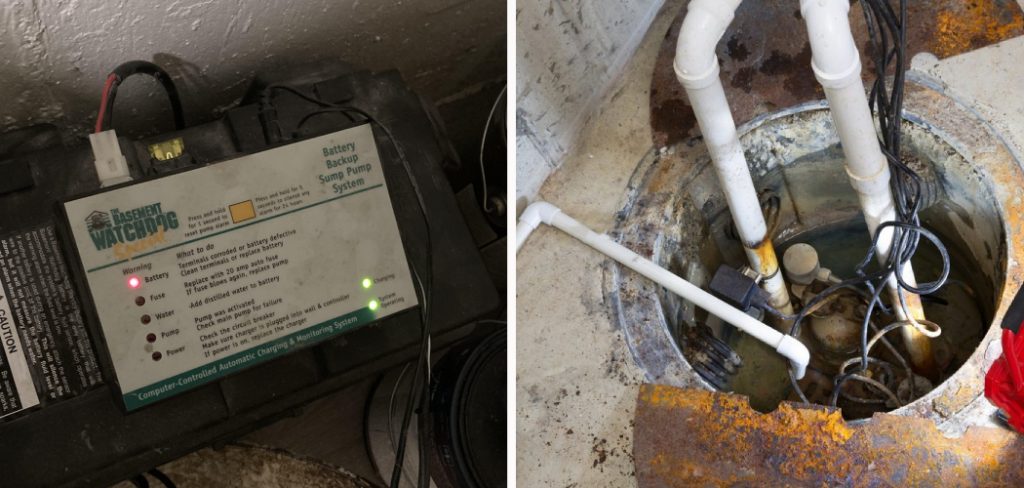
In this post on how to turn off sump pump alarm, I’m going to walk through the most common reasons your sump pump alarm may be going off constantly and annoyingly, even when everything seems fine, and the simple solutions to finally turn it off for good so you can get a peaceful night’s sleep.
Stick with me, and by the end, that headache-inducing beep will be silenced, and your basement will stay dry without the insanity-inducing alarm.
What are the Reasons for a Constantly Beeping Sump Pump Alarm?
First, let’s understand why your sump pump alarm is beeping non-stop. The main reason is usually the float switch being stuck in an “on” position. This can happen if debris or dirt gets caught in the control, causing it to stay elevated even when no water can pump out.
Another reason could be a malfunctioning sump pump float switch or a faulty check valve. These can cause the water level to rise in the sump pit, triggering the alarm even when there is no actual flooding happening.
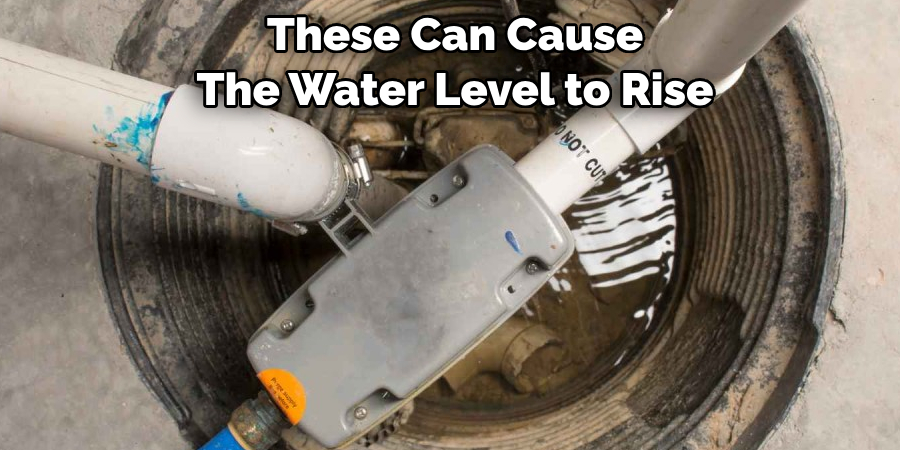
Overall, the sump pump alarm is designed to alert you of potential issues with your sump pump, but it can also be triggered by simple malfunctions or debris.
What Will You Need?
Before we dive into how to turn off the sump pump alarm, let’s make sure we have all the necessary tools and materials. You will need:
- A pair of rubber gloves
- A flashlight or headlamp
- Screwdriver (depending on your sump pump model)
- Cleaning brush
Now that you have everything ready let’s get to the steps for turning off sump pump alarm.
10 Easy Steps on How to Turn Off Sump Pump Alarm
Step 1. Identify the Source of the Alarm
The first step in turning off a sump pump alarm is to identify the source of the alarm. If your sump pump is connected to an alarm system, you may need to check the control panel for any error codes or messages that can help you determine what is causing the alarm. You should also check the sump pump itself for any visible signs of damage or malfunction.
Step 2. Check for Obstructions
Once you have identified the source of the alarm, you should then check for any obstructions in and around your sump pump. Ensure that no foreign objects block the intake or discharge pipe, as this can cause your sump pump to become clogged and trigger an alarm. You should also check for any blockages in your home’s plumbing system that may prevent water from draining correctly.
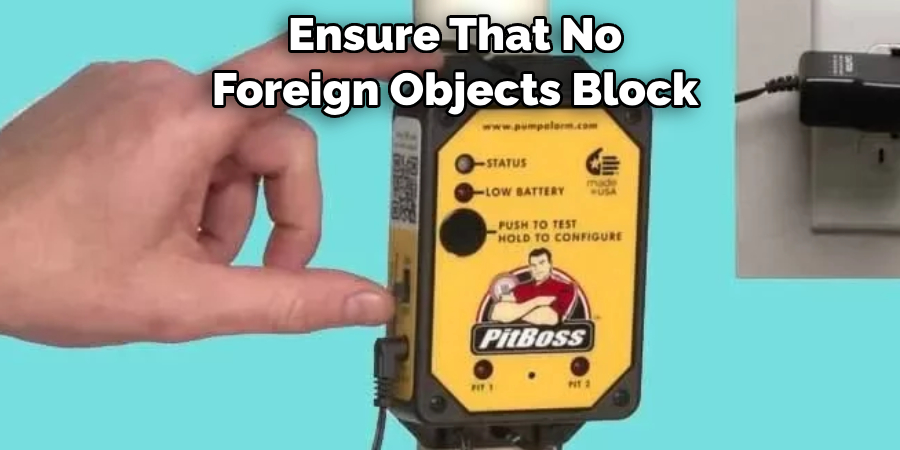
Step 3. Reset Your Sump Pump
If you have checked for all possible obstructions and still cannot find a cause for your sump pump’s alarm, it may be time to reset your pump. Depending on the type of sump pump you have, this could involve unplugging it from its power source and plugging it back in after a few minutes or pressing a reset button on its control panel. If none of these solutions work, then it may be time to call a professional plumber who can help diagnose and fix any deeper issues with your sump pump system.
Step 4. Clean the Float Switch
If the sump pump alarm continues to beep after resetting, the issue might be with the float switch. Put on your rubber gloves, and using your flashlight or headlamp, check the float switch for any debris or dirt causing it to stick in the ‘on’ position. If you find any, carefully remove the debris using the cleaning brush. Once the switch is clean, try manually moving it up and down to ensure it operates smoothly. Remember to reconnect any disconnected wires or parts during the cleaning process. If the float switch is clean and functioning correctly, but the alarm continues, proceed to the next step.
Step 5. Examine the Check Valve
The check valve prevents water from flowing back into the sump pit. If it’s faulty, it could cause the water level to rise and trigger the alarm. First, disconnect the sump pump from its power source to examine it. Then, locate the check valve — it’s usually a tiny plastic or metal flap located on the discharge pipe. Ensure it’s not stuck and is moving freely. If it appears to be damaged, you may need to replace it.
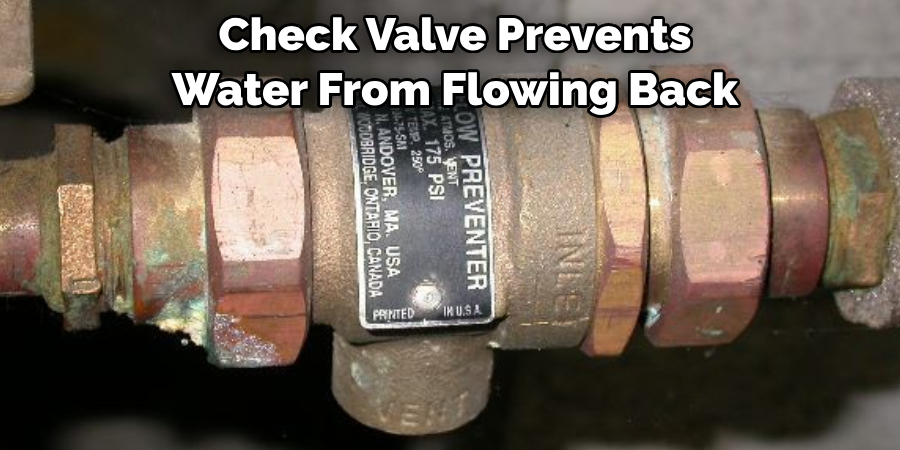
Step 6. Inspect the Sump Pump
After checking the check valve, it’s time to inspect the sump pump itself. Look for signs of wear and tear or any damages. Ensure the pump is not overheated or burned out due to continuous operation. If you notice any unusual noises or smells coming from the pump, it might be time to call a professional.
Step 7. Test the Sump Pump
Now that you’ve inspected the sump pump, it’s time to test it. Reconnect the pump to its power source and pour a bucket of water into the sump pit. Watch to see if the pump activates and drains the water correctly. If it does, this should also turn off the alarm. If the pump doesn’t start or is not effectively draining the water, it may be time to call a professional for further inspection or replacement.
Step 8. Check the Power Supply
If the sump pump is not activating, checking the power supply next is essential. Ensure the pump is properly plugged in and the power source works. You can test this by plugging another appliance, like a lamp, into the same outlet to verify its functionality. If the power supply seems to be fine, yet the pump isn’t working, you may have a deeper issue that requires a professional’s attention.
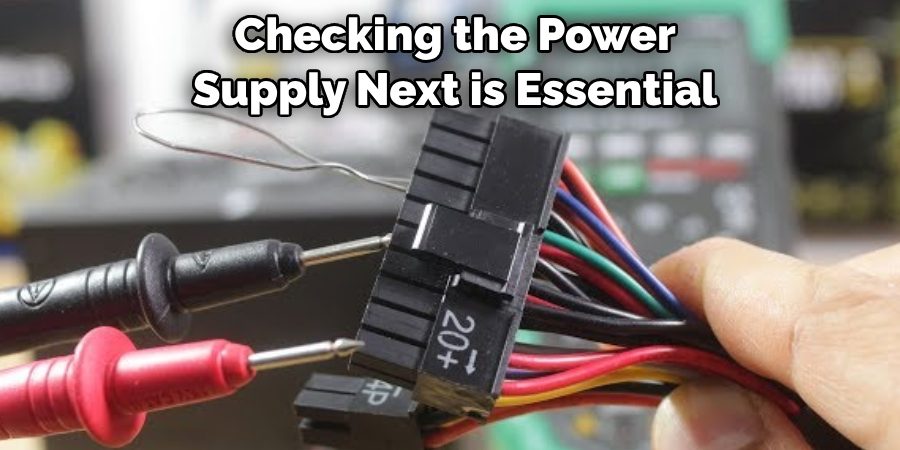
Step 9. Check the Alarm System
If your sump pump seems to be operating correctly, but the alarm is still sounding, the issue may lie with the alarm system itself. Like the sump pump, ensure the alarm system receives power correctly. Additionally, check any control panels or interfaces for error messages and try resetting the alarm system. If, despite these efforts, the alarm continues, you may need to consult with an alarm system professional.
Step 10. Consult a Professional
If you’ve performed all the previous steps, and the sump pump alarm is still sounding, it’s time to consult a professional. Remember, attempting to fix complex sump pump issues yourself can sometimes lead to more significant problems if you’re not experienced in this area. Contact a trusted plumber or alarm system professional to help diagnose and remedy the problem. At this point, ensuring your home is protected from potential water damage is crucial, so don’t hesitate to seek professional assistance if necessary.
By following these steps, you can effectively troubleshoot and turn off your sump pump alarm.
5 Additional Tips and Tricks
- Know Your System: Familiarize yourself with your sump pump system. Understanding its design, components, and how it operates can help you effectively switch off the alarm.
- Refer to the Manual: The user manual accompanying your sump pump is invaluable. It provides detailed guidance on how to disable the alarm.
- Power Outage Preparedness: In case of a power outage, ensure you have a backup sump pump that operates on battery. This will prevent the alarm from constantly going off due to the primary pump’s failure.
- Routine Maintenance: Regular maintenance can prevent alarm triggers. Clean the pump, check the float switch, and inspect for clogs or blockages.
- Keep the Alarm Quiet: If your sump pump alarm persists, try placing a noise-dampening material on top of the notice. This can help reduce the noise and prevent it from startling you.
Don’t let a constantly beeping sump pump alarm ruin your day. With these additional tips and tricks, you can turn off the alarm and ensure your basement stays dry.
5 Things You Should Avoid
- Ignoring the Alarm: The sump pump alarm alerts you to potential problems. Ignoring it could lead to severe water damage in your basement.
- Forgetting Regular Checks: Remember to inspect the sump pump and the surrounding area regularly for leaks, clogs, or mechanical issues.
- Bypassing the Manual: It’s not advisable to avoid the user manual. All steps for turning off the sump pump alarm should be followed as outlined in the manual.
- Neglecting Maintenance: Skipping routine maintenance can lead to mechanical failures, which trigger the alarm. Regular checks can ensure that your sump pump is operating correctly.
- Disabling the Alarm Permanently: While it can be annoying, the alarm serves an important function. Completely disabling it could leave you unaware of a serious issue with your sump pump. Instead, focus on addressing the underlying problem causing the alarm.
By avoiding these common mistakes, you can ensure that your sump pump alarm is adequately addressed and your basement remains protected from potential water damage.
Conclusion
In conclusion, figuring out how to turn off sump pump alarm can be confusing and stressful – especially if you don’t know what caused the panic in the first place. But as long as you take your time to identify the source of the alarm and follow the instructions in this article, you can have those screeching noises silenced within minutes.
Investing in high-quality sump pumps and having regular maintenance services performed on them will keep water levels steady and reduce the chances of an emergency.
With these essential tips in hand, homeowners have doubly secured their homes from sump pump alarms, so it is time to take action today!

